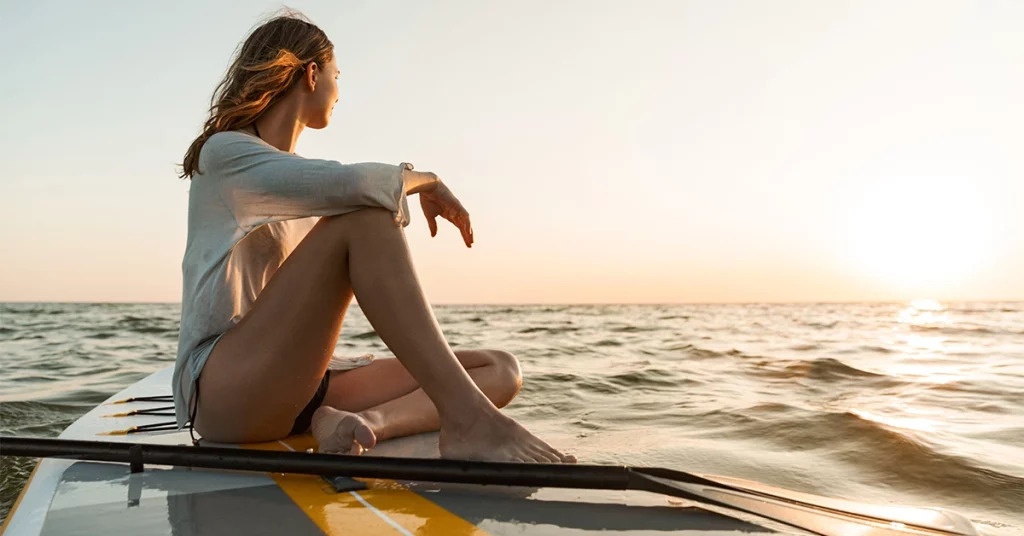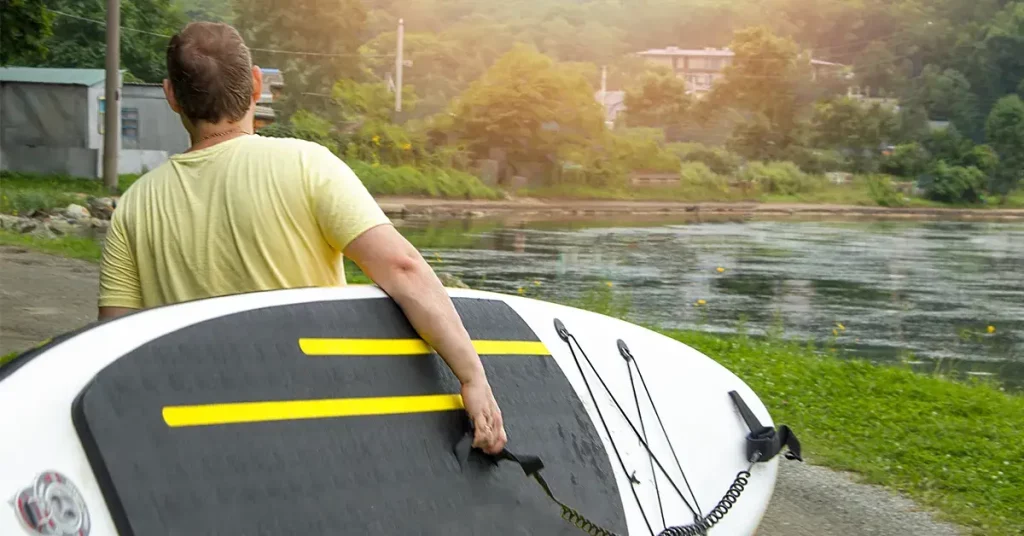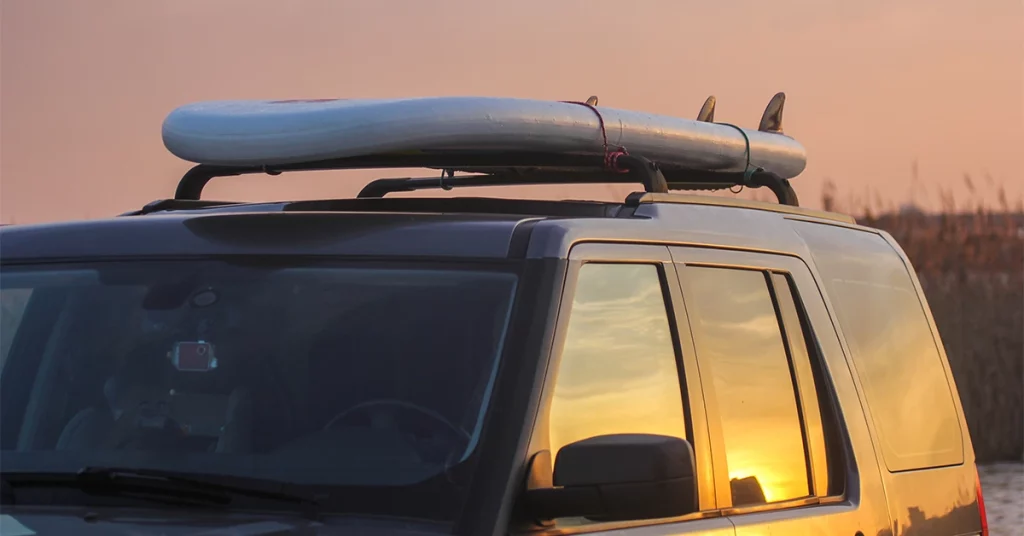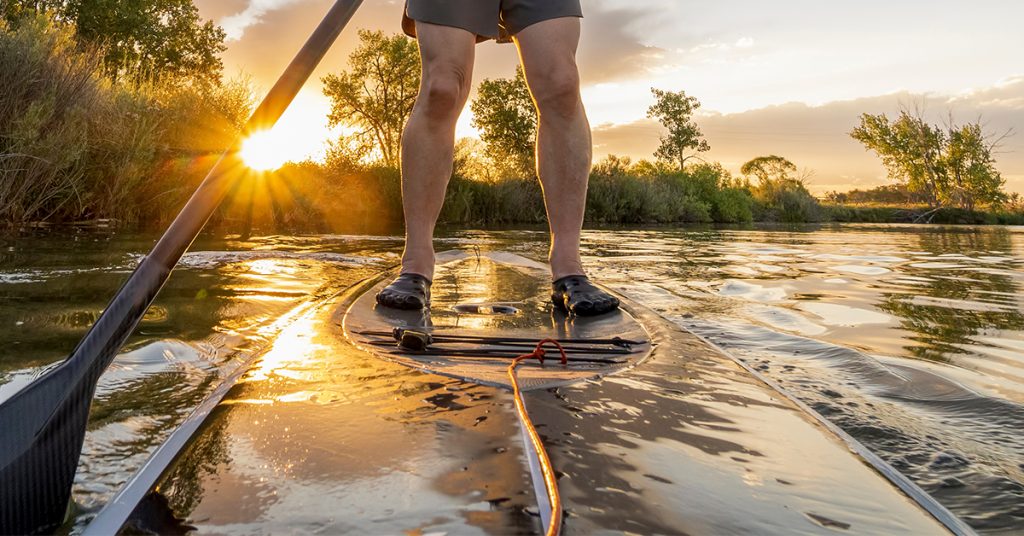Paddle boards have grown in popularity, and like any other sport, gear for paddle boarding has become more and more specialized. Almost all sports gear have their items specialized to gender as well. In that specialization, some boards are better suited for women for several reasons.
While there are one-size-fits-all paddle boards out there, most riders have a specific kind of paddle board activity in mind. It’s not only about what kind of rider you are but what about the difference between being a man or a woman.
However, the best paddle board for women may come down to the board’s constriction and weight.
Are There Paddle Boards Just for Women?

While you’ll be hard-pressed to find a paddle board specifically made for a woman, some boards might be better suited. However, the activities you plan to use your board for may well play a bigger role in selecting a stand up paddle board than your gender.
But if you’re looking for a pink paddle board with butterflies and unicorns on it and thinking that’s the board for a girl, you won’t find it unless you have it custom made, and even then, depending on what kind of paddle boarding the woman in question wants to do, it might not be the right one for her.
Differences in Paddle Boards for Men and Women
In most cases, women aren’t as big as men. They generally weigh less and have slighter frames. Obviously, that’s a generalization, and some women are bigger than men. But typically, a paddle board intended for smaller riders may end up as the best women’s paddle board and give her the best board features for her experience.
A board’s width and length will affect its performance (wider boards will be slower, while longer boards serve heavier riders better), so you’ll want to know what you hope to get out of your paddle board before choosing a size. However, given the generalization above, paddle boards for women will likely be on the shorter side of the spectrum.
This size chart for breaks down the paddle boards they may suit women best based on weight and height.

Paddle boards have weight limits, so you’ll want to know your prospective board’s weight capacity. As the above chart shows, lighter bodies will do better on shorter, narrower paddle boards. However, depending on the activities you plan for, you may want to step out of these normal ranges, which we’ll discuss a bit later.
Your skill level will also dictate what size works best for you, as well. The best women’s paddle board will be the one that matches your wants, needs, and abilities on a stand up paddle board.
Board Material
Another non-sexist, general statement about women is that they tend to have less upper-body strength than men.
This isn’t because they are inferior, but rather because they have less muscle mass in their upper extremities than men do, and since they only have about ten percent the amount of testosterone that men have, they have a more difficult time cultivating upper-body strength.
What does this have to do with choosing a stand-up paddleboard? It’s a practical matter because very few paddleboarders have a board caddy to carry their gear for them. Women, in general, may have a tougher time lugging a heavy board around than their male counterparts.
For this reason, many paddleboarders choose an inflatable paddle board. Hard paddle boards are built much like surfboards. They may be constructed from wood, fiberglass, carbon fiber or epoxy resin.
Most have a foam core. While the foam isn’t super heavy, all the other materials covering that core (we didn’t even mention the deck pad on top of the board) can add some mass to the board.
Inflatable boards are built from quality materials (military-grade PVC, for example) and come with a storage bag, a pump (maybe a hand pump, or maybe a high pressure pump), and a repair kit.
An inflatable board can be a high quality board, especially with the drop stitch technology that minimizes leaks and similar issues.
Compared to fiberglass / epoxy paddle boards, the Roc Inflatable Paddle Board is much lighter— 17 lbs. That’s half the weight of the 34-lb. Boardworks Kraken All-Water Stand Up Paddle Board. The deck pad on each board is solid, so there won’t be much difference in footing.
Both boards will perform differently, but the lighter weight of the inflatable board may be the tipping point when it comes to a paddle board for women.
This is not to say that women are weak. Women paddleboarders are every bit as capable of handling a heavier fiberglass board. But inflatable paddle boards may constitute a more practical choice for you in terms of putting the board in and out of the water.
Inflatable paddle boards store a little easier, too, as you can deflate them and fold them up for when you’re not on the water where they’ll take less storage space than epoxy or fiberglass paddle boards. The removable center fin on most of them helps, too. The ability to bring a paddle board with you on a road trip with friends or family is priceless.
Stand Up Paddle Board Activities

Just like some guitar players play electric guitars and stay away from acoustics, and others prefer nylon-stringed classical guitars to a sleek Stratocaster, different kinds of paddle boarding adventures need different kinds of paddle boards.
Whether you’re going for speed, fun, or meditation, with all the paddle boards out there means you can find the best women’s paddle boards for your preferences.
SUP Yoga
Yoga on a stand up paddle board (SUP Yoga) offers a unique take on yoga practice. While there are many benefits to this variety, you need the right board for it. And you’ll probably need a little patience at first, too, as SUP yoga will cause you to fall in the water
SUP yoga has many health benefits and allows us to practice in a new environment, and many people love being out in nature. Since you’re on a yoga paddle board that’s much less stable than the floor where you normally get on your yoga mat, extra mindfulness will serve you well.
You should also move through your poses a little more slowly than when on dry land. Sure, you’ll practice on flat water, but even the most awesome board will still feel unsteady on the water as compared to the floor of your yoga studio.
Since many yoga poses call for a narrow base of support, when practicing SUP yoga, you will likely need to modify your stances in some poses to maintain your balance on a wobbly yoga board.
In most yoga disciplines, Samasthiti, for example, calls for the feet to be very close together. Widening your stance will help you remain stable.
Some paddle boards are marketed specifically as SUP yoga boards, but all you really need to be sure you have is a non-slip deck. Just like you don’t want your hands and feet sliding on your yoga mat, you want your extremities to stay planted on your board’s deck pads. Plus, a mat is one less thing you need to take with you out on the water.
While an inflatable SUP board will work just fine for SUP yoga, some users have a preference for rigid paddle boards, as a rigid board can feel like a more stable board– or like practicing yoga on land.
SUP Racing
SUP racing can be a fun and challenging undertaking, but as with anything else, you need the right board for you.
What we’re after in racing boards is longer, narrower boards. The basic truths of physics tell us that a longer board will cut through the water at a higher rate of speed than a shorter one. A longer board has a longer waterline, which directly influences the possible speeds you can reach on one.
Many SUP racers ride boards that are 14 feet long or longer. While there are race categories for shorter boards, a 12-footer will cost you speed in your race.
As for the board’s width, the narrower it is, the less surface resistance you’ll get from the water. However, you’ll also lose some stability, and if you spend time flailing around trying to keep your balance, any speed advantage you hoped to gain from a narrow paddle board will be squandered.
Some racing boards can be less than 20 inches wide, but that’s for the pros. A new SUP racer needs a board 23 inches wide or so. Again, a big, fat, wide board will provide stability, but it will be slower, so if you’re planning on getting into SUP racing, avoid those 32-inch boards listed above.
SUP Surfing
A pretty cool little subculture of surfing and paddle boarding, paddle board surfing combines the two sports. It makes sense, but it also means yet another set of circumstances and features to consider when choosing a paddle board.
Some paddle boards are specifically designed for surfing— mainly in their shapes. Many stand-up paddleboards are wide affairs with wide noses and the bare minimum in the fins department.
On a paddle board, your fin keeps you from drifting this way and that with every paddle stroke, but on a surfboard, the fin bites into the water and permits you to make your cuts and turns.
For SUP surfing, you want a board with a surfing shape— a pointed nose, a convex shape, and maybe even a swallow tail. You’ll also want a shorter board— nine feet or so. Longer boards go faster, as we’ve said, but they turn more sluggishly. You need the ability to execute quick turns when surfing— on a paddle board or a traditional surfboard.
You don’t have to buy a surf-specific paddle board, either. Most all-around paddle boards will serve you well, provided you stick with shorter boards. We’ve shown that the shorter boards weigh less and that this factor may appeal when looking for a women’s paddle board, so there may be several benefits to shorter boards.
Inflatable paddle boards for women lend portability, but for SUP surfing, you probably want to stick with hard paddle boards if you plan on using yours exclusively for surfing. There are paddle board carry straps that free up your hands and shift the center of gravity of the paddle board. This allows SUP riders with a smaller frame to carry their boards easily. You’ll get more maneuverability from an epoxy board, but don’t feel like an inflatable paddle board is an inferior product. Some of the best paddle boards are inflatable.
Conclusion
The best paddle boards are the ones that do what you want how you want them to. Women’s paddle boards can be lighter and shorter without compromising SUP construction.
Whether you go for an inflatable paddle board or a hard board with a long center fin, a long board for racing or a short, wide one for tooling around, the best stand up paddle board for you is out there. You just have to find it.




